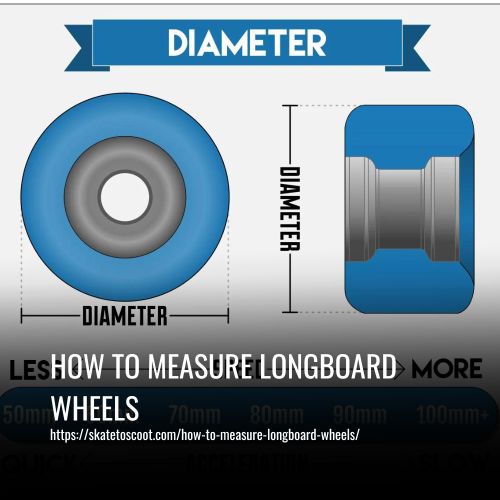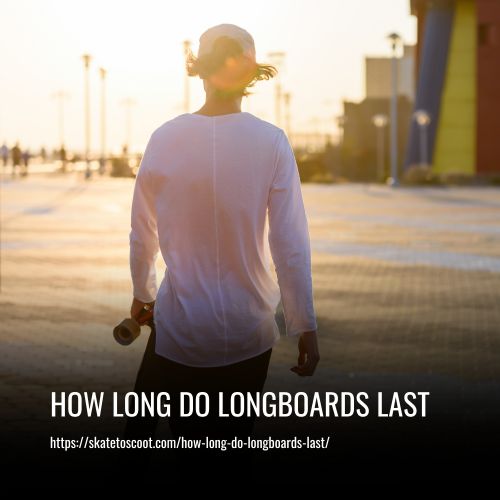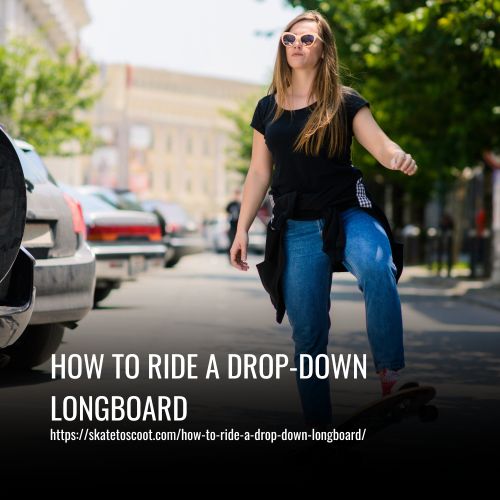As an Amazon Associate we earn from qualifying purchases.
Are you a longboard enthusiast looking to upgrade your wheels? Knowing how to measure longboard wheels is crucial in finding the perfect fit for your riding style and preferences. Whether you’re a beginner or a seasoned rider, understanding the dimensions of your wheels can greatly impact your overall experience on the board.
Longboarding has gained immense popularity in recent years, with riders constantly seeking ways to improve their performance. The size and shape of your wheels can affect your speed, grip, and maneuverability on different terrains. So, if you’re ready to take your longboarding to the next level, let’s dive into the world of measuring longboard wheels and discover the key factors to consider.
In this article, we will explore the various methods to measure longboard wheels, including diameter, durometer, and contact patch. By understanding these measurements, you’ll be able to make informed decisions when choosing the right wheels for your longboard. So, grab your measuring tape, and let’s get started on this exciting journey of finding the perfect wheels for your longboarding adventures.

Measure Longboard Wheels: Step by Step
get accurate measurements. Whether you choose to use a ruler or a caliper, these step-by-step instructions will help you measure your longboard wheels accurately:
Using a ruler:
- Identify the wheel’s center: Before measuring, locate the center of the wheel where you will place the ruler.
- Place the ruler: Once you’ve found the center, position the ruler there and make sure it is securely in place.
- Determine the size: Roll the wheel from the inside out, keeping the ruler at a distance of about a foot or two. As you roll, you will be able to see the wheel’s diameter on the ruler’s scale. Take note of the measurement in centimeters or millimeters.
Using a caliper:
- Remove the wheels: Begin by removing the wheels from the longboard to get a clear view of the axle.
- Position the caliper: Spread apart the jaws of the caliper and gently place them around the axle. Make sure the caliper is stable for accurate measurements.
- Measure the diameter: To measure the wheel’s diameter, you only need to measure one dimension since the diameter is the same no matter where you measure from. Use the markers on the caliper’s main scale to interpret the length measurement.
By following these step-by-step instructions and using either a ruler or a caliper, you can accurately measure the diameter of your longboard wheels. This will ensure the right fit and performance for your riding style.
Different Types of Longboard Wheels
When it comes to choosing longboard wheels, there are several different types available, each designed for specific purposes and terrains. Here are the main types of longboard wheels:
1. Park Wheels:
Park wheels are designed for use on concrete and other smooth surfaces. They are typically smaller in diameter and made of harder plastic, providing more control and grip on the surface. The deeper tread pattern helps with traction during tricks and stunts.
2. Cruiser Wheels:
Cruiser wheels are ideal for cruising around town or at the skate park. They have a larger size and softer durometer, providing a smoother ride on rougher surfaces. These wheels are quieter and more comfortable for longer rides.
3. Longboard Wheels:
Longboard wheels are specifically designed for use on longboards. They are larger and wider than standard longboard wheels, providing stability and a smooth ride. These wheels are often made of softer materials to absorb shocks and vibrations, enhancing the overall riding experience.
Tools to Measure the Diameter of Longboard Wheels
Measuring the diameter of longboard wheels is essential to ensure the right fit and performance for your riding style. Thankfully, there are a few different tools you can use to accurately measure the diameter of your longboard wheels. Here are the three main tools for measuring longboard wheel diameter:
- Ruler: Using a ruler is a simple and effective way to measure the size of your longboard wheels. Start by placing the ruler at the edge of the wheel and roll it from the inside out, keeping a distance of about a foot or two. As you roll the ruler, you will be able to see the wheel’s diameter on the ruler’s scale. This method provides measurements in centimeters or millimeters.
- Caliper: A caliper is another useful tool for measuring longboard wheel diameter, particularly a digital caliper. First, remove the wheel from the longboard to get a clear view of the axle’s diameter. Place the caliper’s moveable jaws around the axle, ensuring a stable position for accurate measurements. This tool is precise and reliable in providing the diameter of the wheel.
- Main Scale: The main scale, also known as a large, heavy, flat lever on a measuring device, can be used to measure the diameter of a longboard wheel. To use the main scale, you need to balance the wheel using this tool without touching its surface. This method ensures accurate measurements without the risk of damaging the wheel.
By utilizing these measuring tools – ruler, caliper, and main scale – you can determine the diameter of your longboard wheels with ease. Remember to take accurate measurements to ensure the right fit and optimal performance for your longboarding adventures.
What Are the Common Sizes of Wheels?
When it comes to longboarding, having the right size of wheels is crucial for a smooth and enjoyable ride. There are various sizes available to suit different terrains and skating styles. Here are the common sizes of longboard wheels:
- Small Wheels (48mm – 51mm): On a level surface, longboard wheels with smaller diameters are perfect for flat terrains. Although wheels smaller than 50mm were popular in the past, most wheel manufacturers now start at 50mm. These wheels are less likely to get trapped in pebbles or cracks, but there is more space between the wheel and the board, reducing the risk of wheel bite.
- Medium Wheels (52mm – 54mm): Ideal for street and transition longboarding, medium-sized wheels offer versatility. It is recommended to begin with a 52mm wheel from any reputable wheel manufacturer for your first complete longboard set. These wheels come in various durometers and designs to suit different riding preferences.
- Large Wheels (55mm – 60mm): For ramp and vert longboarding, larger wheels are preferred. They provide a more stable platform and allow riders to sustain speed more easily. Large wheels are less likely to get trapped in cracks or small objects. However, they may be heavier compared to smaller wheels.
By understanding the common sizes of longboard wheels, you can choose the right ones for your preferred riding style and terrain. Remember to consider factors like the durometer, wheel profile, and the overall design of the wheel to ensure the best performance and ride comfort.
What’s the Right Size of Longboard Wheels for You?
When it comes to longboarding, the size of your wheels plays a crucial role in your overall skating experience. Choosing the right size will ensure a smooth and comfortable ride, while also allowing you to perform tricks or cruise effortlessly.
For beginners, a recommended size of 52-54mm is ideal. These wheels offer better grip on the surface and provide better stabilization while moving. They work well for riders who are still learning the ropes and want more control over their board.
If you’re looking to perform tricks, opting for bigger durometers, around 80A and up, is a good choice. These wheels are harder and provide a greater level of durability. They are perfect for executing technical moves and jumps.
On the other hand, if cruising is more your style, lower durometers, around 75A, are recommended. These softer wheels offer a smoother ride by absorbing shocks and vibrations from rough surfaces. They provide a more comfortable and enjoyable experience, especially on long rides.
How Do Riser Pads Help To Choose Longboard Wheels?
Riser pads play a crucial role in choosing longboard wheels, especially for boards with larger wheels. These pads are placed between the trucks and the deck to elevate the board, providing several benefits.
One of the main advantages of using riser pads is preventing wheel bite. Wheel bite occurs when the wheels come into contact with the deck while turning sharply, causing the rider to suddenly stop or be thrown off balance. Larger wheels have a greater chance of experiencing wheel bite due to their increased size. By using riser pads, the distance between the wheels and the deck is increased, reducing the risk of wheel bite and allowing for smoother turns and maneuvers.
In addition to preventing wheel bite, riser pads are also useful for protecting the board from damage during tricks and stunts. The added height created by the riser pads provides more clearance between the ground and the tail of the board, resulting in increased pop and reducing the likelihood of scraping or damaging the board’s edges.
Furthermore, riser pads help to absorb vibrations and shocks from rough surfaces, leading to a smoother and more comfortable ride. They act as a buffer, minimizing the impact felt by the rider, especially on longer rides or when traversing uneven terrain.
Why Do Longboard Wheels Have Flat Spots?
Longboard wheels can develop flat spots when the rider turns 90 degrees to the direction the wheels are moving. This occurs when the wheels lock up and stop, leaving a spot on the wheel. These flat spots can also cause the wheel to appear egg-shaped or oval, which can be less noticeable but still disruptive to the ride. When these flat spots or oval spots occur, the rider will experience a decrease in speed, and in extreme cases, they may be thrown off the board completely.
Proper riding techniques can help prevent flat spots. This includes learning to slide or power slide to control speed and direction while minimizing the locking up of the wheels. Additionally, regularly rotating and flipping the wheels can help distribute the wear and prevent flat spots from developing.
Choosing the right wheels for the riding style can also impact the occurrence of flat spots. Using harder wheels can provide better resistance to flat spots, as they are less likely to deform under pressure. Softer wheels, on the other hand, maybe more prone to developing these spots.
FAQs
The size of Longboard wheels is an important factor in determining the performance of your board. Larger wheels generally provide more speed and stability, making them suitable for downhill rides. Smaller wheels, on the other hand, offer quicker acceleration and a more responsive ride, making them great for tricks and maneuvers.
When choosing Longboard wheels, consider the type of riding you’ll be doing and the surface you’ll be riding on. For rougher surfaces, opt for larger and softer wheels to absorb vibrations. Smoother surfaces require smaller and harder wheels for increased speed and maneuverability. Additionally, the durometer or hardness rating of the wheels should match your riding style and weight.
Yes, the softness of Longboard wheels can affect board speed. Softer wheels have more grip and can provide smoother rides on rougher terrain. However, they may sacrifice some speed due to increased friction. Harder wheels, on the other hand, offer less grip but can roll faster on smooth surfaces, resulting in higher speeds.
The color of Longboard wheels does not directly affect their hardness. The durometer rating is the key determinant of hardness, and it is not influenced by color.
Conclusion:
Measuring longboard wheels may seem like a small detail, but it can make a big difference in your riding experience. By understanding the importance of wheel size and durometer, you can choose the perfect set of wheels for your style and preferences.
So, go ahead and take the time to measure and experiment with different wheels – you’ll be shredding the streets in no time! Remember, the right wheels can take your longboarding to new heights and make every ride an absolute blast. Keep rolling and enjoy the ride!
Amazon and the Amazon logo are trademarks of Amazon.com, Inc, or its affiliates.



